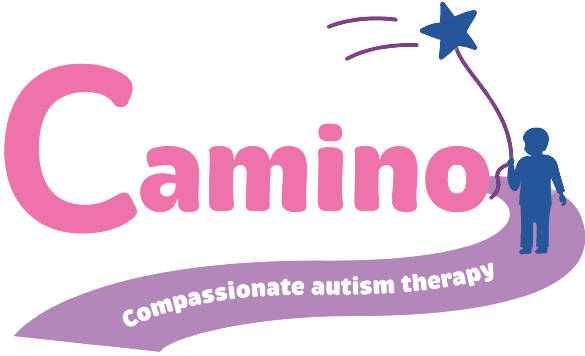When it comes to supporting children with developmental challenges, occupational therapy and speech therapy are crucial in enhancing their growth and well-being. At Camino, we understand the importance of integrating these therapies with Applied Behavior Analysis (ABA) to offer comprehensive care that addresses various aspects of a child’s development. In this blog, we’ll explore the roles of ABA, occupational therapy, and speech therapy and how their collaboration can significantly benefit children receiving care.
What Is Applied Behavior Analysis Therapy?
Understanding what Applied Behavior Analysis (ABA) therapy is and how it works is the first step in recognizing its importance. ABA is a therapeutic approach rooted in behavioral science that focuses on improving specific behaviors, such as social skills, communication, reading, and adaptive learning skills like hygiene and daily living. It is widely used to support individuals with Autism Spectrum Disorder (ASD), helping them achieve a higher level of independence and functioning.
ABA therapy involves the design, implementation, and evaluation of environmental modifications to produce socially significant improvements in behavior. This approach is based on the principles of learning theory and is used to reinforce positive behaviors while reducing negative ones. Through techniques like positive reinforcement, ABA helps individuals learn new skills and modify behaviors that interfere with their daily lives.
What Is an Occupational Therapist?
Occupational therapists (OTs) play a pivotal role in helping children develop the skills they need to perform everyday activities. But what is an occupational therapist? An OT is a healthcare professional trained to assist individuals in improving their ability to perform tasks in their daily lives. For children, this might include activities like dressing, eating, and playing.
Occupational therapists assess a child’s physical, emotional, and cognitive abilities and then create a customized treatment plan to address areas of need. They focus on fine motor skills, sensory processing, and coordination, which are essential for tasks like writing, buttoning a shirt, or holding a pencil. The goal of occupational therapy is to help children gain independence and participate fully in their daily activities.
Here at Camino, we partner with Functional Playground Therapies to offer occupational therapy services to children with autism.
What Is a Speech-Language Pathologist?
Speech-language pathologists (SLPs), also known as speech therapists, specialize in evaluating and treating communication disorders. So, what is a speech-language pathologist? An SLP is a professional trained to diagnose and treat speech, language, and swallowing disorders in children and adults. For children with developmental challenges, SLPs are essential in helping them develop effective communication skills.
Speech therapists work on various aspects of communication, including articulation, language comprehension, and social communication skills. They help children who have difficulty producing sounds, understanding language, or using language appropriately in social situations. By improving these skills, SLPs enable children to express their needs, interact with others, and succeed in educational settings.
The Difference Between Occupational Therapy and Speech Therapy in ABA
While both occupational therapy and speech therapy are vital for a child’s development, they focus on different areas. Understanding the difference between occupational therapy and speech therapy in ABA is crucial for maximizing the benefits of each therapy.
Occupational therapy primarily addresses physical and motor skills, sensory processing, and daily living activities. In contrast, speech therapy focuses on communication, language development, and social interaction. When integrated with ABA, these therapies work together to provide a well-rounded approach to a child’s development.
For example, a child with ASD might struggle with sensory processing, which affects their ability to participate in daily activities. An OT can help the child develop coping strategies, while ABA techniques reinforce these strategies through positive reinforcement. Meanwhile, an SLP might work on improving the child’s communication skills, enabling them to express their needs more effectively. ABA principles can then be applied to encourage the use of these communication skills in different settings.
Benefits of Occupational Therapy and Speech Therapy Collaboration With ABA
The collaboration between occupational therapy, speech therapy, and ABA offers numerous benefits for children with developmental challenges. Occupational therapy and speech therapy collaboration with ABA ensures that all aspects of a child’s development are addressed in a cohesive and comprehensive manner.
Here are some of these benefits for children:
- Holistic Approach: By integrating OT and SLP services with ABA, children receive a holistic approach to their care. This means that all areas of development—physical, cognitive, and communication—are supported, leading to more significant progress.
- Consistent Reinforcement: ABA provides a framework for reinforcing the skills learned in OT and SLP sessions. This consistent reinforcement helps children generalize new skills across different environments, making them more effective in real-world situations.
- Customized Care: Collaboration allows for a more personalized treatment plan that addresses the specific needs of each child. OTs, SLPs, and ABA therapists work together to create a plan that targets the child’s unique challenges and strengths.
- Enhanced Communication: The integration of speech therapy with ABA ensures that communication skills are developed alongside behavioral skills. This is particularly important for children with ASD, who often struggle with both behavior and communication.
- Increased Independence: By addressing both motor skills and communication, this collaborative approach helps children become more independent in their daily lives. They learn to perform tasks on their own and express their needs effectively, leading to greater self-sufficiency.
As a trusted ABA therapy provider in Albuquerque, Camino believes in the power of collaboration to help children reach their full potential. Our partnerships with local occupational therapy and speech therapy providers allow us to offer comprehensive care that addresses all aspects of your child’s development.
If you’re interested in learning more about a tailored ABA treatment plan in Albuquerque, please contact Camino today to schedule a consultation. We’re here to provide the support your child needs to thrive.

